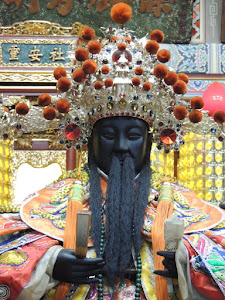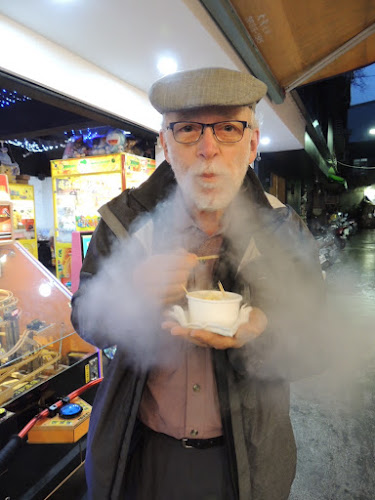 |
| Build your own cultural connections |
Should it really cost $500 a day to tour Cuba, or $600-$700 for a 30-minute round-trip flight between Miami an Havana? No, and it doesn't have to any longer.
U.S Tour companies and airlines operating charter-only flights have profited handsomely from U.S. government-sanctioned "People-to-People" group tours, the only legal way most American tourists have been able to visit - until now. As of March 23, new rules announced by the Obama administration will be in effect allowing American travelers to put together their own independent educational trips for the purpose of leaning about Cuban people and culture.
Travelers who fill their days with museum visits, cultural sightseeing and interactions with Cubans could meet the requirements. You'll be required to keep record of your activities for five years, but other than that, no special license or advance permission will be required.
I visited Cuba a few years ago, partly on an organized tour and partly on my own, and agree with John Caulfield, chief of the United States mission in Cuba from 2011 to 2014, who told the New York Times that the change will expose Americans to a more authentic experience in Cuba than they have been able to get on tours. As the Times points out, many of the commercial tours "involve a relatively closed circle of architects, performers, economists and organic farmers who cycle through American tour groups," who often receive money for the visits.
“They’ve essentially deregulated travel,” Robert Muse, a Washington attorney who specializes in U.S. laws regarding Cuba, told the Los Angeles Times. “This is a standing invitation to travel to Cuba for U.S. tourists.”
In other words, Americans are now to free to make their own arrangements much the way thousands of Canadians and Europeans do, with the exception of making plans for a beach vacation.
Despite what some tour operators would have you believe, there's no mystery to booking independent travel to Cuba. Other than the requirement that all travelers obtain a visa, the Cubans themselves place no restrictions on what Americans can do once there. Here's some tips to get you started, along with some ideas on how to fulfill the educational and people-to-people requirements.
Air: Tricky to book on your own, but still doable, and about to get easier. U.S airlines, including Seattle-based Alaska Airlines, have applied for new commercial routes that the U.S. government will allow, possibly starting as early as this fall. Alaska Air has proposed two daily round-trip flights between Havana and Los Angeles. U.S. airlines are currently restricted to offering only expensive charter flights. InsightCuba, a tour operator that offers 12-day tours to Cuba at a cost of about $500 per person, per day, charges an extra $665-765 for the round-trip flight between Miami and Havana.
Alternatively, Air Canada and Cubana Air offer daily commercial flights into Havana (Air Canada from Canadian cities, Cubana from Cancun and Mexico City) that can be booked and paid for online or through travel agents. American travelers can also book iInternational and domestic air travel through Cuba Junky, a long-time and reliable online travel agency for Cuba travel.
 |
| Cuban bed and breakfast in Vinales |
Accommodations: TripAdvisor offers hundreds of reviews for Cuban hotels and bed and breakfasts (called cases paticulares), offering what may be the best way to interact with Cuban people. Cuba Junky provides hotel booking services, and publishes a $4.99 app for finding and booking casas particulares directly with the owners. Some casa owners even have Facebook profiles. Airbnb lists more than 800 casas on its website. It charges a booking fee which may be worth of the convenience of booking online and paying for the reservation with a credit card.
What can you expect in a casa? The Cuban government regulates homestays, requiring owners to set aside dedicated rooms and bathrooms and meet inspection requirements.
On our visit to Cuba, my husband and I took a bus three hours from Havana to the rural community of Vinales, a UNESCO site known for its national park, limestone cliffs and traditional farms harvesting tobacco and corn. Scenic hikes and cave explorations await, but the best reason we could find to come to Vinales was to stay in a casa particular.
I looked over reviews on TripAdvisor, then made an online booking at Casa Papo y Niulvys. They requested no deposit, only asked that I call the day before to reconfirm.
Papo met us at the bus stop on his bike, and we walked to the peach-colored house the couple built few years ago on what was a vegetable garden next door to his parents.
Niulvys was a gracious and talkative hostess, and a great cook. We paid $20 per night for the bright, spacious room below, with windows overlooking the garden, AC and a private bathroom. A breakfast of fresh fruit, eggs, toast, juice, coffee and cereal was an extra $4 each. Dinners (lobster one night, chicken the next) were another $8. Add a couple of Papo's pre-dinner Mojitos spiked with fresh mint from the garden, and we paid around $50 a night for the room, breakfast, drinks and dinner.
When it comes to hotels, it's easy enough to find their websites, and book directly. Rooms at the upscale Hotel Parque Central, Hotel Nacionale de Cuba and many others, can be booked this way.
Enter the Cuban economy: Familiarize yourself with Cuba’s dual currency system. You’ll be exchanging dollars for convertible pesos (CUCs), a “hard currency” worth $1 each, minus a 10 percent exchange tax, a tit-for-tat for the U.S. embargo against Cuba. You can avoid the 10-percent tax by bringing either euros or Canadian dollars.
One of the hardest concepts for outsiders to grasp is that most Cubans are paid a government salary of about $20 per month, earned in the local currency, called pesos Cubanos or CUPs (worth about 4 cents each). Education, housing and health care are free. CUPs buy the basics: cooking oil, cheap meals, coffee cut with pea flour. But much of what the average Cuban wants and needs — drinkable coffee, washing machines, materials to fix up their homes — is only available to those who can pay in hard currency. (Tourism and money sent by relatives in the U.S. are the main sources).
Cuba is moving towards eliminating the dual currency system, and there are already signs of convergence. Many previously CUC-only stores now accept either, and a new system of CUP pricing and accounting is being rolled out.
 |
| Join the locals at La Coppelia |
 |
| Waiting in line is part of the experience |
To get a sense of everyday Cuban life, tip in convertibles, but for a truly local experience, change $5 into pesos Cubanos, and enter government-subsidized Cuba. Buy a 4-cent ice-cream cone. Or patronize one of the fledgling entrepreneurs selling ice cream and pastries for pennies or pizza from their kitchen windows. Havana's famous La Coppelia ice cream parlor, a sprawling outdoor complex where Cubans line up by the hundreds, accepts only CUPs, except in a tiny area walled off for tourists. Use your CUPs and join the local fun.
It's an ideal place for foreigners can mix with Cubans who don't have something to sell or aren't working in the tourist industry. Many tourists miss this real La Coppelia experience, however, because the guards steer foreigners to a separate "hard currency'' area where two scoops served in a glass dish cost around $2.75.
Visit a local artist: Artists and musicians are Cuba's elite. They can keep all the money they earn, and enjoy special privileges, such as freedom to travel out of the country. One of the most successful is Jose Fuster. HIs hose and studio in the suburban Havana neighborhood of Jaimanitas are on the itineraries of many tour groups, but independent travelers can easily visit themselves via taxi or local bus.
 |
| Mosaic sculptures by Jose Fuster |
Starting around 1995, a time economic belt-tightening after the break-up of the Soviet Union, Fuster got the idea to brighten up his neighborhood. His home is covered in ceramic tile sculptures, and now so is his neighbor's house, the doctor's office and many more homes - with their permission, of course.
 |
| Habana Centro |
Get off-the-beaten path: Tourists see Havana's renovated Habana Vieja (Old Havana), but for a feel for what living here like for most people, walk through a neighborhood like Havana Centro, where kids play ball in the crumbling streets. Calle Obispo, a pedestrian shopping street linking some of the prettiest parts of Havana Vieja with seedier Centro, brings tourists and locals together with its eclectic mix of luxury hotels, art galleries, cafes, hard currency stores displaying frying pans and toothpaste in the windows and "peso'' ice cream shops. The spiffy old American cars get all the attention, but try the local transport. We road around most of the time in these little egg-shaped open-air taxis.
 |
| Local transport |
Learn about Cuba’s changing economy and differing views about life under Fidel Castro and his brother, Raul. Follow blogs by Cuban activists on Translating Cuba. Among the writers is Yoani Sanchez, author of Havana Real, whose blog is translated into English by Mary Jo Porter of Seattle.
For more ideas, photos and snapshots of everyday life in Cuba, I invite you to see my full Cuba blog.





















